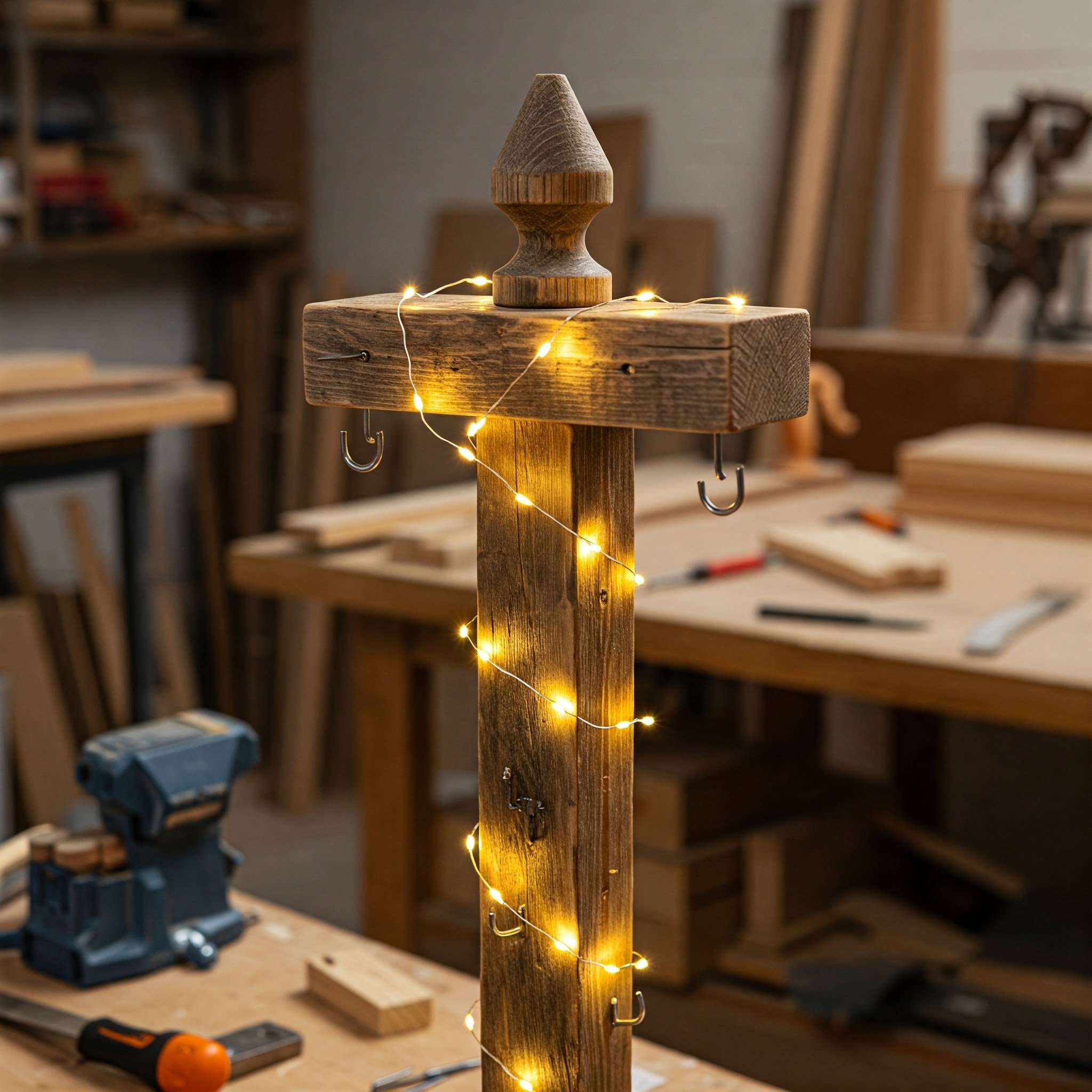How to Get Rid of Nutgrass: Effective Solutions
Struggling with pesky nutgrass in your lawn or garden? Discover the most effective solutions to get rid of nutgrass and reclaim your outdoor space in this comprehensive guide.
Oh, nutgrass! It’s the bane of many gardeners' and homeowners' existence. This stubborn weed, also known as nutsedge, has a knack for showing up where it’s least wanted and sticking around longer than an uninvited guest. If you’ve ever tried to pull it out, only to have it pop back up a few days later, you know just how frustrating it can be.
But don’t lose hope! In this guide, How to Get Rid of Nutgrass: Effective Solutions, we’ll explore various methods to banish this pesky intruder for good. From natural remedies to chemical treatments, we’ve got you covered. Ready to reclaim your lawn? Let’s get started!
What Is Nutgrass, and Why Is It So Annoying?
Before we dive into the solutions, let’s get to know our foe. Nutgrass isn’t your average weed. It’s a perennial plant belonging to the sedge family and thrives in warm, wet conditions. Its underground tubers (often called “nuts” or “nutlets”) make it particularly hard to control.
Why Nutgrass Is a Problem
Fast Growth: Nutgrass grows rapidly, often outpacing other plants and grasses.
Resilient Tubers: Even if you pull it out, its underground tubers can sprout new shoots, making it a relentless weed.
Nutrient Competition: Nutgrass competes with desirable plants for nutrients and water, weakening your lawn or garden.
Difficult to Remove: Its deep roots and spreading nature make it tough to eliminate completely without the right approach.
Nutgrass is a notorious weed that poses significant challenges for gardeners and homeowners alike. Known for its rapid growth, nutgrass often outpaces other plants and grasses, quickly taking over lawns and gardens. One of its most frustrating traits is its resilient underground tubers, which can sprout new shoots even after the weed is pulled out. This resilience makes nutgrass a relentless invader. Additionally, it competes fiercely with desirable plants for vital nutrients and water, weakening the health of your lawn or garden. Its deep roots and spreading nature further complicate removal, as it’s difficult to eliminate completely without employing the right strategies. Understanding these challenges is key to managing and controlling this persistent weed effectively.
How to Get Rid of Nutgrass: Effective Solutions
Getting rid of nutgrass requires a mix of persistence, the right tools, and sometimes a bit of trial and error. Let’s explore some of the most effective strategies:
1. Manual Removal
For small infestations, sometimes the simplest solution is the best—good old-fashioned pulling.
Grab the Whole Plant: Make sure to pull the nutgrass from the base, trying to get the entire root system and tubers.
Use a Garden Fork: A garden fork can help loosen the soil around the roots, making it easier to pull up the whole plant without leaving bits behind.
Repeat as Needed: Because nutgrass is persistent, you’ll likely need to repeat this process several times to ensure complete removal.
For tackling small infestations of nutgrass, sometimes the simplest method—manual pulling—can be surprisingly effective. The key is to grab the nutgrass firmly at the base and carefully pull it out, aiming to remove the entire root system and its resilient tubers. Leaving any part of the root behind can result in regrowth, so thoroughness is crucial. Using a garden fork to loosen the soil around the roots can make this process easier, helping you extract the plant without breaking the roots or tubers. Given nutgrass’s persistence, this process may need to be repeated several times to achieve complete removal. Regular attention and persistence can help keep nutgrass under control, preventing it from spreading further in your garden or lawn.
2. Boiling Water
For a chemical-free solution, boiling water can be surprisingly effective at killing nutgrass.
Boil Water: Heat a pot of water until it reaches a rolling boil.
Pour Directly on Nutgrass: Carefully pour the boiling water directly onto the nutgrass, ensuring you cover the base and surrounding area.
Repeat as Needed: You may need to repeat this a few times to completely kill the weed.
Caution: Boiling water will kill any plant it touches, so be careful not to splash it on your lawn or garden plants.
3. Vinegar Solution
Vinegar is another natural remedy that can help control nutgrass.
Mix the Solution: Combine one part vinegar (preferably horticultural vinegar with a higher acetic acid content) with one part water.
Spray on Nutgrass: Use a spray bottle to apply the solution directly to the nutgrass leaves.
Apply on Sunny Days: For the best results, apply the vinegar solution on a hot, sunny day. The sun will help the vinegar penetrate the plant and dry it out.
Note: Like boiling water, vinegar can harm surrounding plants, so apply it carefully.
4. Chemical Herbicides
If manual and natural methods aren’t cutting it, you might need to bring out the big guns—chemical herbicides specifically designed for nutgrass.
Select the Right Product: Look for herbicides labeled for nutsedge control. These typically contain active ingredients like sulfentrazone, halosulfuron, or imazaquin.
Follow Instructions: Always follow the manufacturer’s instructions for application rates and safety precautions.
Apply at the Right Time: Apply herbicide when the nutgrass is actively growing, typically in the spring or early summer.
When manual and natural methods fail to control stubborn nutgrass, chemical herbicides can be an effective solution. To target nutgrass specifically, it’s essential to choose a herbicide labeled for nutsedge control. These products often contain powerful active ingredients like sulfentrazone, halosulfuron, or imazaquin, designed to penetrate the tough root system and tubers. For best results, always follow the manufacturer’s instructions carefully, paying close attention to application rates and safety precautions to protect yourself and your garden. Timing is also crucial—herbicides should be applied when the nutgrass is actively growing, typically in the spring or early summer, to maximize their effectiveness. With the right product and proper application, you can tackle even the most persistent nutgrass infestations.
5. Improve Lawn Health
A healthy lawn is your best defense against nutgrass. Strengthen your grass so it can outcompete weeds naturally.
Mow Regularly: Keep your lawn mowed at the appropriate height for your grass type.
Fertilize Properly: Apply fertilizer to promote healthy grass growth. Avoid over-fertilizing, as this can encourage weed growth.
Water Wisely: Water deeply but infrequently to encourage deep root growth, making your lawn more resilient against weeds.
Maintaining a healthy lawn is one of the most effective strategies for preventing nutgrass from taking over. By focusing on strengthening your grass, you can naturally outcompete weeds and reduce the chances of infestation. Regular mowing at the appropriate height for your grass type helps maintain a thick, dense lawn, which is less inviting to weeds. Proper fertilization is equally important—apply the right amount of fertilizer to promote robust grass growth while avoiding over-fertilization, which can inadvertently encourage weed growth. Additionally, watering wisely by providing deep, infrequent irrigation helps develop deep root systems, making your lawn more resilient and less susceptible to nutgrass. By following these practices, you’ll create a healthier, more weed-resistant lawn that thrives naturally.
Preventing Nutgrass from Returning
Once you’ve dealt with the nutgrass, the last thing you want is for it to make a comeback. Here are some tips to keep it at bay:
Mulch: Apply a thick layer of mulch around plants and garden beds to suppress nutgrass growth.
Aerate the Soil: Aerating your lawn improves drainage and reduces the waterlogging conditions that nutgrass loves.
Regular Inspection: Keep an eye out for new nutgrass shoots and remove them promptly before they spread.
Proper Lawn Care: Maintain a robust lawn with regular mowing, fertilizing, and watering to prevent weeds from gaining a foothold.
Common Mistakes to Avoid
Even with the best intentions, there are a few pitfalls to watch out for when battling nutgrass:
Leaving Tubers Behind: When pulling nutgrass, make sure to remove the entire root system. Leaving tubers in the soil can result in new growth.
Overusing Herbicides: Over-reliance on chemical herbicides can harm your lawn and the environment. Use them as part of an integrated weed management plan.
Ignoring Lawn Health: A neglected lawn is a magnet for weeds. Prioritize regular lawn care to prevent nutgrass and other weeds from taking over.
Conclusion
Nutgrass might be a formidable foe, but with persistence and the right strategies, you can reclaim your lawn or garden from its grasp. From manual removal and natural remedies like boiling water and vinegar to targeted chemical herbicides, there’s a solution for every situation.
This guide on How to Get Rid of Nutgrass: Effective Solutions has provided you with various tools and tips to tackle this pesky weed head-on. Remember, regular maintenance and prevention are key to keeping nutgrass at bay. So, roll up your sleeves, get out there, and give your yard the care it deserves! Happy gardening!
Frequently Asked Questions
1. Why does nutgrass keep coming back after I pull it?
Nutgrass has resilient underground tubers that can sprout new shoots even after the visible plant is removed. That’s why it’s crucial to remove the entire root system and use additional control methods.
2. Can I use household vinegar to kill nutgrass?
Household vinegar might help with small, young nutgrass shoots, but horticultural vinegar, with a higher acetic acid content, is more effective for mature plants.
3. Is nutgrass harmful to pets or children?
Nutgrass itself isn’t harmful, but some chemical herbicides used to control it can be. Always follow safety instructions and keep pets and children away from treated areas until it’s safe.
4. How long does it take to get rid of nutgrass completely?
The time it takes to eradicate nutgrass depends on the infestation’s severity and the methods used. It can take several weeks to months of consistent effort to eliminate it fully.
5. Can nutgrass grow in shady areas?
Nutgrass prefers sunny, wet conditions but can still grow in partially shaded areas. Improving soil drainage and maintaining lawn health can help prevent its spread.































